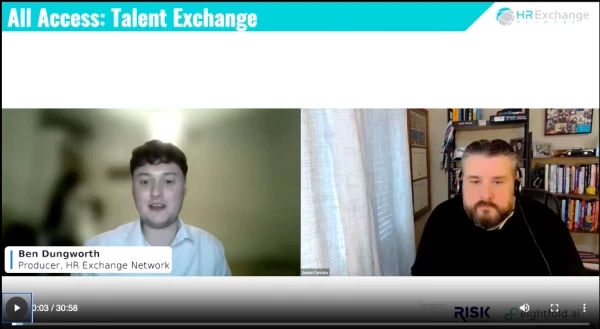
If there ever was a moment that called for change, it’s now.
As businesses and communities, we are navigating a triple crisis (economic, public health, and social justice) unlike anything we’ve seen in our lifetimes.
As recruiting professionals, we all want to attract the very best talent, and help improve the diversity of our companies.
Yet, most companies still approach recruiting the same way we always have.
Inbound Recruiting Model
- Post and market our open positions
- Review the applications that come in (along with sourcing candidates proactively)
- Run a robust interview and assessment process
- Select and hire the best candidate.
We call this an inbound approach to recruiting, where much of the focus is reacting to a pipeline of applications.
Recruiting at GitLab was no exception...until now.
Sure, we’d built key innovations into our model, such as:
- Strengthening our outbound sourcing function to attract candidates who likely never would have applied.
- Setting goals to focus our teams on attracting more diverse talent from a wider range of under-represented groups (URGs) and geographies.
- Articulating the importance of intentionally building outbound talent pipelines instead of over-relying on inbound application flow.
These initiatives helped us improve GitLab Recruiting in important ways, yet our results still showed room for improvement.
We were still relying on a fundamentally inbound model, largely focused on reacting to our application channel.
Thanks to our all-remote workforce and incredibly active contributor community, GitLab enjoyed incredible inbound application volumes (>12k/month) that far outpaced those of most companies our size (and even much larger companies).
This volume meant that our recruiters spent a large percentage of their time reviewing and screening applicants, leaving minimal bandwidth to personally source more diverse talent.
Attracting passive candidates takes time, which was often at odds with the velocity of our hiring process.
Pandemic: An Opportunity to Reflect on our Model
March 2020 ushered in the need for lower hiring volumes for GitLab, and a rare opportunity to reconsider our hiring process emerged.
We asked ourselves questions like:
- Instead of continuously adjusting the inbound model we (and almost all other companies) were using, what if we decided to approach recruiting in a completely different way?
- What if we focused our full team’s (sourcers and recruiters) efforts on proactively attracting talented people who might never have applied in the first place?
- How much diversity and efficiency could we attract at the top of our funnel if we took the bold step of closing our inbound application channel completely?
After reflecting on these questions and reviewing recruiting and retention data, we decided that the most effective way to attract top, diverse talent who aligned with our CREDIT values was to fundamentally revamp our entire approach to recruiting.
Our Shift to Outbound Recruiting
In April 2020, we moved away from the reactive, inbound recruiting model that we relied on, and closed our applications channel (yes, the one that was generating >12k applications per month).
Instead, we adopted a proactive, outbound approach to recruiting, focusing the full efforts of our Recruiting team on attracting talent that might never have applied to GitLab (or even heard of our company). This model will allow us to source the most talented candidates for open roles and focus even more during the interview process on whether candidates truly align with our GitLab values.
Candidates can still express interest in GitLab and share their information with us by joining our Talent Community (CRM). By opting in, they’re added to our pool of candidates to consider when sourcing for current and future opportunities.
We set Q2 goals that emphasized diversity and efficiency at the top of our funnel, with the expectation that we could make even greater progress in these important areas by being more intentional in our recruiting approach.
Like everything we do at GitLab, we’re still iterating on our outbound recruiting model.
We’re so encouraged by our early Q2 results that we’ve already (a) established an ongoing KPI for top-of-funnel diversity and (b) raised our KPI for candidates sourced by Recruiting.
Cultivating Diverse Talent
We know that making our companies more diverse is a wise business investment. A great benefit to a proactive, outbound approach to recruiting is that it enables an even more intentional focus on attracting diverse talent.
An important element of any recruiting effort is reducing the influence of unconscious bias in the process, especially when proactively building more diverse recruiting funnels. In June, we held three Live Learning Sessions to help all GitLab team members better understand, recognize, and avoid unconscious bias.
Our transformation to an outbound recruiting model is an important step toward unlocking the potential to meaningfully improve diversity, inclusion, and belonging (DIB) at our company.
As remote work becomes more widely adopted due to the pandemic, more companies are beginning to recognize the potential for all-remote to reduce biases and improve diversity.
READ: Overcoming Talent Acquisition Difficulties During a Pandemic and Recession
I personally feel a deep sense of responsibility to drive bold changes in how we recruit. As the world’s largest all-remote company, we believe we’re uniquely positioned at GitLab to capitalize on the opportunity for remote work to reduce bias and improve diversity.
I challenge other TA leaders and teams to think about ways you can become more intentional in your recruiting models and unlock the full potential of DIB at your organization.
























